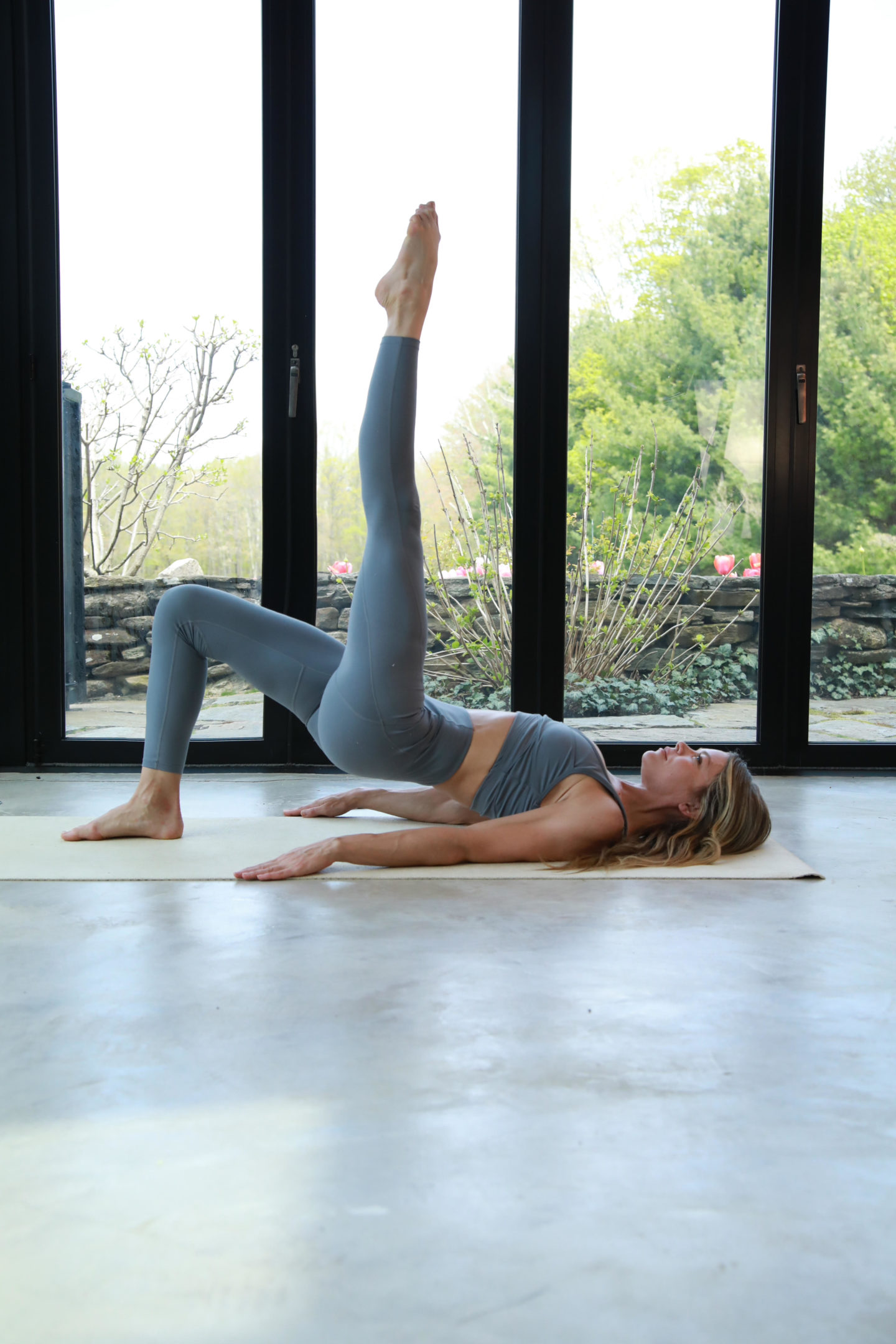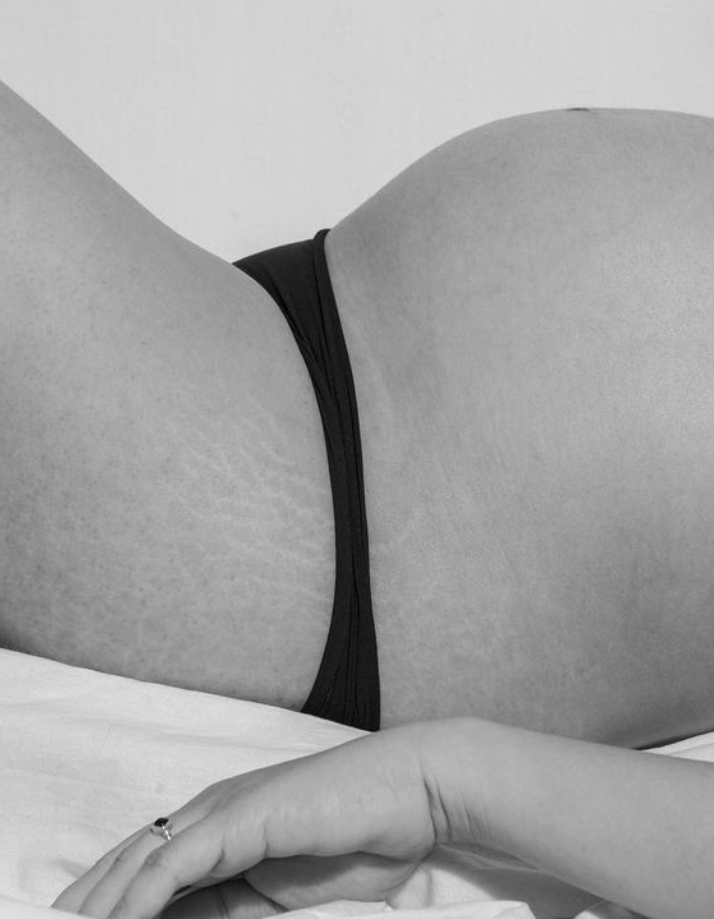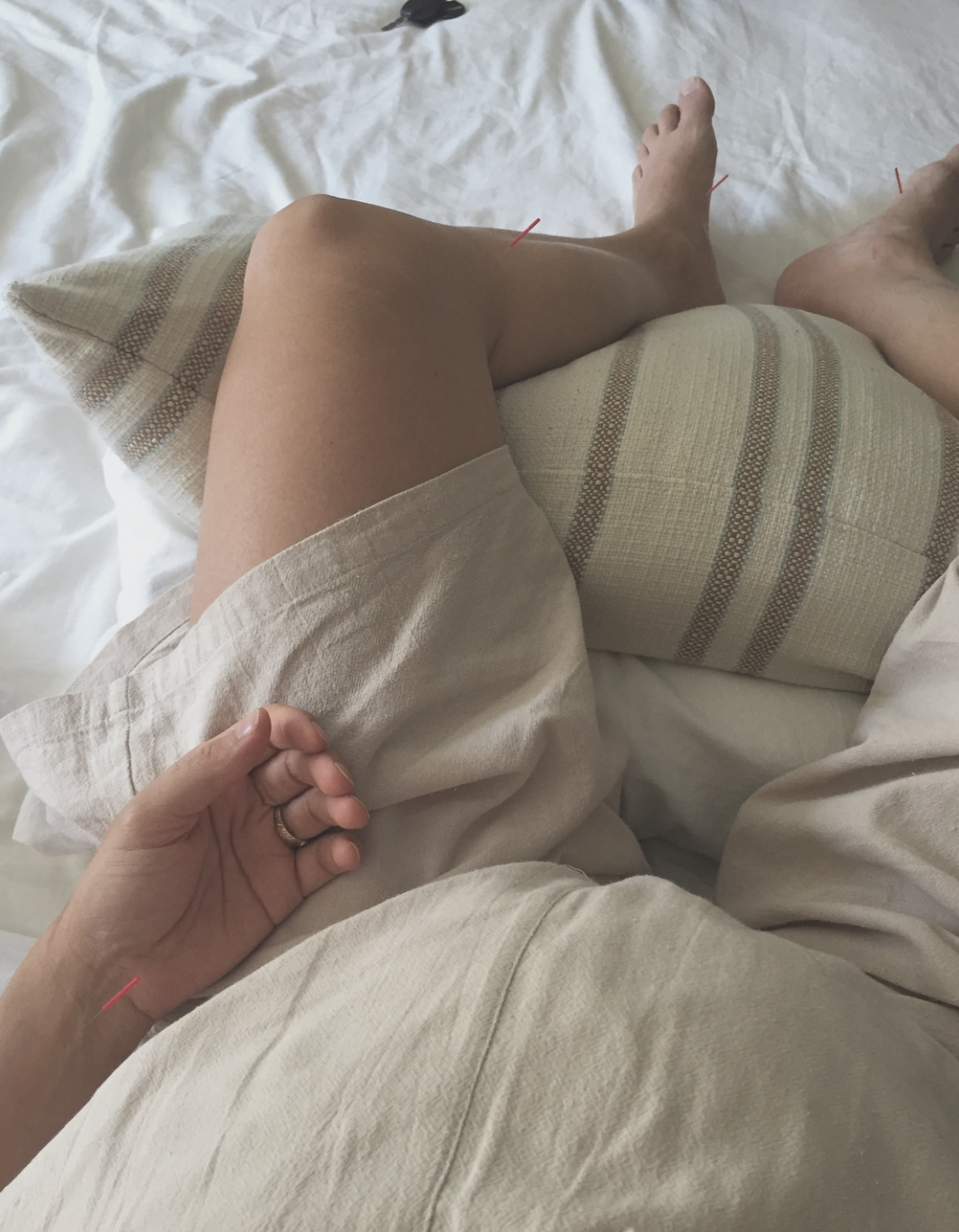When you’re greeted by Erika Bloom at any of her studios, you feel like the sun is shining just for you. Her calm demeanor matched with her tell-it-like-it-is attitude feels unlikely in a workout or wellness setting, and yet, it’s exactly what you need. Especially if you’re a new mama.
So, it’s no surprise that this mother of two (ages 10 and 12) hit the ground running when COVID-19 forced her to close her Pilates studios in New York and L.A.

“During COVID, I thought, this is the time women that have just had babies need support more than ever,” Bloom says. “They’re home alone. They don’t want to go to the doctor. There aren’t even enough resources for postpartum healing if they do. So, I started doing women’s circles just to talk to them about their issues and give them solutions. That led us to create The Postpartum Membership, which they can do from home.”
Bloom’s Postpartum Membership offers a collection of video classes aimed to help new moms that are healing from labor and delivery. Beyond strengthening the core, the classes also aid in recovery from diastasis recti and c-section as well as help tone and reconnect to the pelvic floor. For more self-care, the classes also help restore deeper breathing, improve posture, learn curative self-massage and give holistic care to new mothers.
“There’s a lot of focus in Pilates on prenatal care, and then, when you’d have your baby, nothing truly restorative for what you might experience postpartum,” Bloom says. “Women would come back into the studio with all sorts of issues, some caused by pregnancy, some by labor and delivery, some by inappropriate intervention during labor…and they didn’t have resources to feel okay.”
Already an expert in the field (and having experienced her own journey with diastasis), Bloom prioritizes support for women at this stage—even for those that can’t make it into her studios. “There aren’t many practitioners around the world that offer diastasis healing,” Bloom explains.
Thankfully, through her program, no matter where you are, you can heal.
But before you start healing, let’s get down to basics. Here, Erika Bloom answers our nine pressing questions about diastasis—including WTF is it?
1. What is Diastasis?
Diastasis recti is the separation of the two sides of the rectus abdominis, which is the Six-Pack muscle, at the Linnea Alba- or connective tissue band that runs from the sternum down to the pubis. We have this band of connective tissue that’s supposed to hold the abs together and during pregnancy it can become overstretched without regaining its integrity.
2. Can you heal your diastasis without doing anything?
Yes. Over half of women who have been pregnant end up with a diastasis, but many do heal on their own. The rest need specific work to heal. And it’s never too late to heal. Sometimes I work with women who had their babies 40 years ago and are just now addressing it and it’s still so important and beneficial to do so. But, I think, more importantly, the restoration of the core patterning that is done with diastasis work is key for every woman that has had a baby.
3. How do I know I need help?
Some symptoms to flag would be digestive issues, diarrhea and acid reflux, which often can be caused by diastasis pelvic floor dysfunction. Prolapse can be a symptom of diastasis, along with difficulty breathing and back pain. What I hear women say a lot is like they feel as though they have pyramids and snakes in their belly, which is basically where the intestines push through the space of the diastasis and they can see their intestines.
4. What do I do if I think I have it?
We don’t have postpartum-specific doctors in the US, so diastasis is not always recognized by someone’s Western medicine practitioner. Most of the people doing diastasis correction are people like me — movement therapists or physical therapists. In some countries, like France, it is standard practice to work with a postpartum PT after birth that specializes in it—and in many cultures, it is common for a woman in your family to wrap your belly after you have a baby, which is one of the steps to healing diastasis. There’s more awareness.
5. Can exercise help?
Absolutely. The muscles that get the most deconditioned by pregnancy are the diaphragm, the pelvic floor, and the transverse abdominis. The transverse abdominis is that corset muscle—that deep core muscle that wraps all the way around. When it engages well, it has pockets that hug the two sides of the rectus together and close the linea alba. And those muscles work in conjunction with each other during core stability and breath. If you’re breathing well and you’re accessing your core muscles well, you can heal your diastasis just with the engagement of those muscles.
6. What if I HATE exercising?
The good news is, because they are simply muscles of posture, stability, and breath, just aligning yourself well and breathing properly can heal diastasis—as long as you’re not doing contradictory things that re-open it. So, for women not going back into the gym, just doing a breath practice is the real key for healing.
7. What if I’m a TOTAL gym rat?
I had a six-and-a-half finger diastasis. So, for someone like myself that really likes to work out, what you want to do initially is stick to things that are just arm and leg strengthening in terms of hard work and weights then have all your core work be about posture, alignment, and breath. Your movement needs to be patterned on top of deep body awareness. There are plenty of ways to work hard and still be diastasis safe, but being diastasis safe is essential for healing. I think there’s this rush to go back to “what we were doing before,” but we’re not as we were before once you have a baby. In fact, in many ways, we’re better. We’ve done this tremendous thing with our body. We have this tremendous possibility for re-patterning and setting ourselves up to be more connected with our inner bodies. This sadness about not being able to do 100 crunches is a huge misconception. Just let that go and realize that you have to care for your body differently. This idea that doing that really aggressive core work is going to make your stomach look better or flatter is a huge misconception.
8. How do I know I’m healed?
There needs to be a second evaluation to know that you’re healed. It’s definitely a process. And for some people, it’s a process that goes a little bit forward and back because it is affected by hormones. We have hormones during pregnancy that stay in us postpartum and affect the laxity of our connective tissue. For example, if you are breastfeeding and then stop, and then maybe regain your period or get pregnant again…that’s going to be constantly shifting the integrity of the connective tissue. Diastasis will be something that you may need to pay attention to forever, but this isn’t a negative because being deeply connected to your core awareness is a beautiful, centered place to be.
9. What if I never heal on my own?
Healing is possible for everyone. But as long as you’ve restored your core functionality and you don’t have any symptoms, even if the diastasis remains, there’s not much to do. I have not experienced nor can I think of an example where getting surgery is a good idea. Remember, this is a connective tissue band that’s supposed to have a tremendous amount of movement. If you stitch it up and it can’t move anymore, it decreases functionality when what we want to do is improve form and function. It sort of negates the entire thing.
One of the beautiful things about diastasis healing work is that the focused breathing, awareness of the core, and deep knowledge of your inner body alignment is hugely beneficial to all women at all stages of life, postpartum or not, diastasis or not. It brings strength and grace and elevates overall health.
This article was written in partnership with Erika Bloom.



